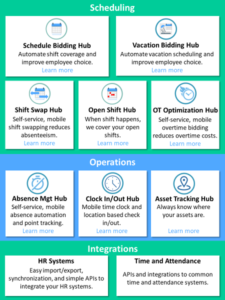
Credit PxFuel
Well-rested employees are more productive. By allowing more time to be spent with family, significant others, and close friends, vacations can help decrease stress, prevent burnout, and improve work-life balance. A recent research by EY found out that for every 40 hours of free time, an employee’s stay at the company increased by eight months.
However, most employees do not take enough vacations and do not use their paid vacation time. Leaving vacation time on the table is taking its toll on employees. A recent study by the World Health Organization (WHO) found that 745,000 people died in 2016 from heart disease and stroke due to long hours.
Take, for example, what happens when an employee accumulates years’ worth of unused vacation days. These get recorded as liabilities on the company’s balance sheet, and the corporate entity must be prepared to compensate the employee if they leave or retire. Unused vacations have cost U.S. businesses $224 billion a year, making them a financial liability for employers.
At the same time, no one profits from an ambiguous time-off policy — or a workplace culture that encourages workaholism. A person who takes a vacation now and then, on the other hand, is invigorated and more focused for an overall increase in productivity.
The urgency of “use it or lose it” vacation leave days explains why employees use the vacation days that they currently have — the policy offers no opportunity for uncertainty. On the other hand, employees tend to lean on the side of rarely taking vacation time when policies provide room for ambiguity, such as when vacation days are unrestricted and untracked.
The leaders of a company must ultimately set the tone for the company’s vacation policy. This policy includes ensuring that everyone takes their allowed vacation time and cultivating a culture that encourages them to use their vacation days.
This article will explore how Vacation Bidding process aids in distributing vacation time fairly and transparently which encourages employees to use their time offs. This becomes even bigger problem where employers need to adhere to union rules or other compliance bodies while optimizing employees experience and well-being.
How Vacation Bidding Helps
Vacation bidding process allows employees to choose and plan their preferred vacations quickly and easily. Employers can set the number of people who can take vacations during any given day of the year based on the seasonality and business needs. Employees can observe how other employees intend on taking their vacations making it easy to ensure too many employees are not taking the same time off. It also gives a fair and transparent way for employees to request the vacation time they desire.
Essentially, in a Vacation Bidding, all employees can request specific time periods off based on preference criteria. The preference criteria include specifics such as simply requesting a week off, requesting one of several weeks off, or requesting multiple weeks off in a row or a day off or multiple days off. Once each employee puts in their preferences for vacation time, the company can determine how they want to award requests based on a variety of criteria. They can prioritize employees based on position, seniority, length of employment, performance, reward points or other criteria established by the organization. Employees can bid for as many preferred vacation days/weeks as they want during the vacation bid process.
From here, the company allots a specific number of employees that can take vacation time on any given day/week. Of course, the number of employees can be adjusted for peak vacation times.
This process can be repeated on a chosen frequency by the company if they have the right tools to administer it. The frequency can be monthly, quarterly, annual or any other duration chosen by the company or the business unit.
How ShiftX Automates the Entire Vacation Bidding Process
Knowing what days or weeks are available to take vacation is one of the most difficult components of vacation bidding. Even more frustrating, when an employee’s rank order is low, the problem becomes exponential.
In this regard, ShiftX provides employees with a real-time view of their available vacation dates based on their accrued vacation and seniority ranking (as defined by the company), as well as bespoke union rules (where applicable)
Employees are free to submit as many requests as they want. Employees can also view all vacation weeks and days that the administrator has made available.
The user can define preferences for the vacation weeks they wish in the Preference Criteria Section. Preferences can get divided into three categories:
- “I want this day/week” – The most straightforward method for requesting a day/week.
- “I want one of these days/weeks” allows the user to choose one day/week from a set of weeks.
- “I want consecutive days/weeks” – This allows the user to get days/weeks in a row.
Furthermore, the preferences can be reordered and reviewed in sequence until all available weeks have gotten awarded.
After the initial allocation, the company will have choice to open it up to employees to request changes to their vacations during specified periods of time. They can specify the number of Change Periods and when they can occur. Employees might amend their vacation arrangements after the initial bid during change periods. Transferred and new employees can also choose their vacations during this period.
During a change period, employees can choose from days/weeks that the administration has added to accommodate new employees and weeks that other employees have exchanged.
In the end, it is up to each company to decide how many days off an employee will receive. But, with the right tool at your disposal, vacation distribution can be quite a breeze. With ShiftX, collaborate with your colleagues to figure out how to improve the as-is processes and map out the to-be processes at your organization.





Recent Comments